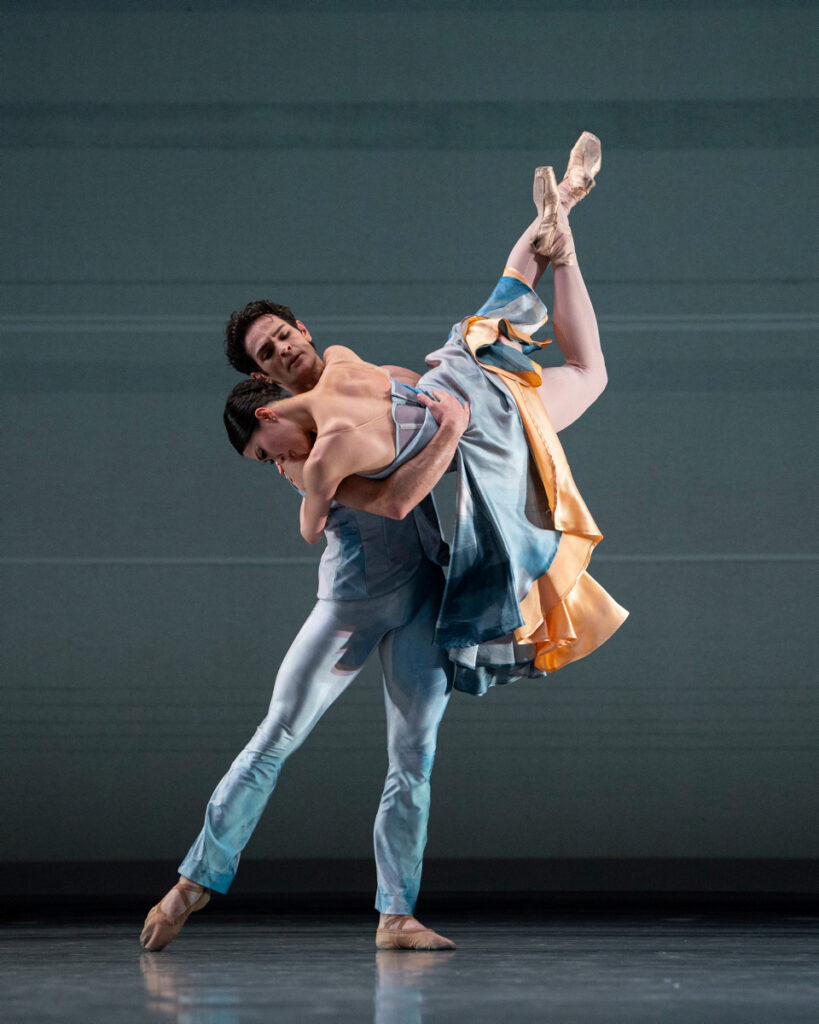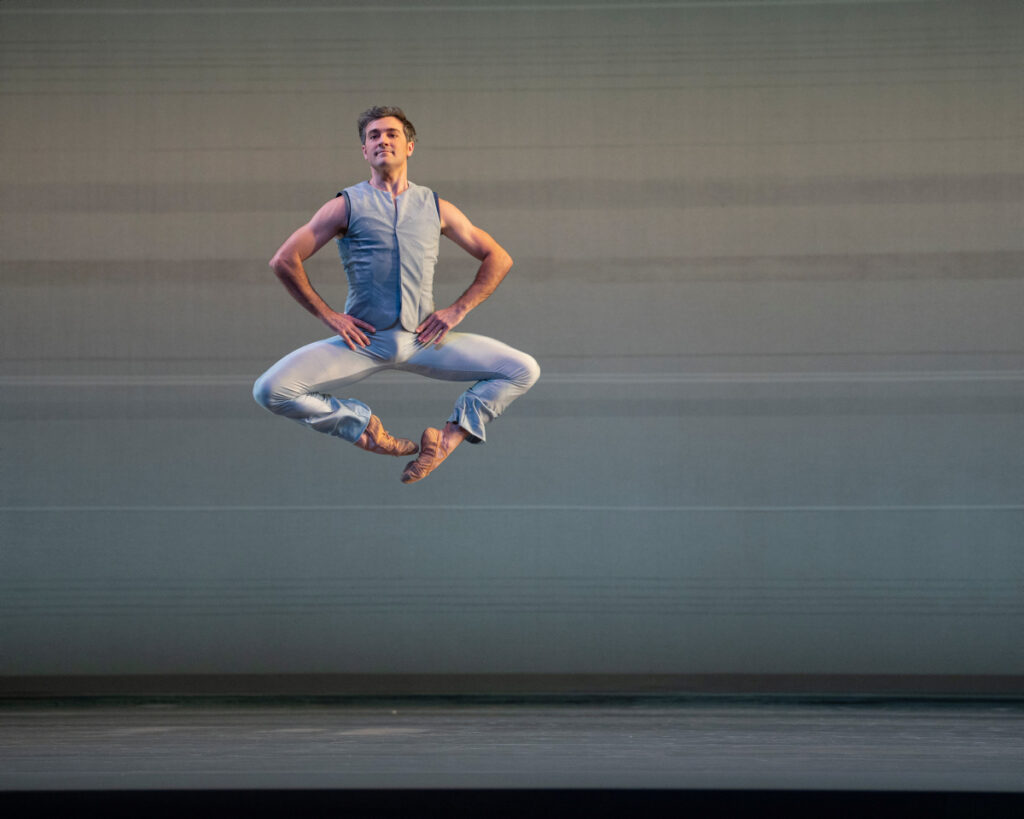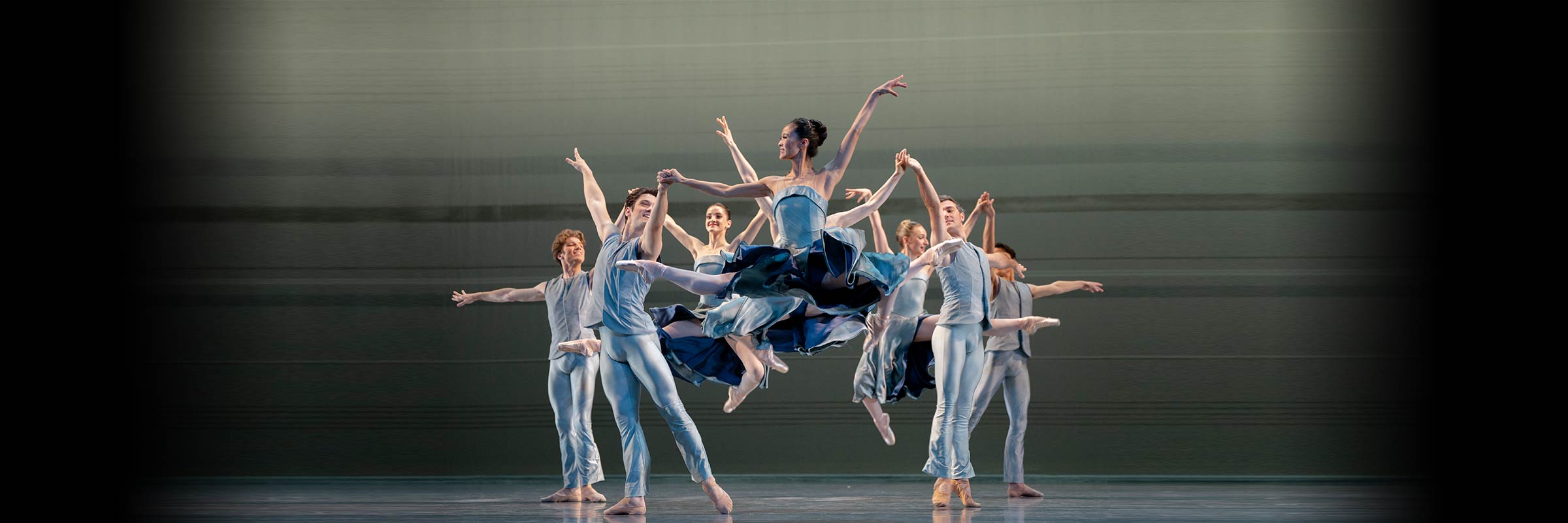About Tomasson’s Harmony
A Buoyant Celebration of Dance and Dancers
Harmony, Helgi Tomasson’s final ballet as artistic director of SF Ballet before his retirement next summer, started as an act of generosity. In the fall of 2020, after months of dancing separately in their own homes, SF Ballet dancers came back to the studios. To minimize contact, the 80 dancers of the Company were divided into four “pods.” Choreographers Cathy Marston, Danielle Rowe, and Myles Thatcher were each assigned a pod to create ballets to be filmed for the 2021 Digital Season. Tomasson realized the fourth pod was adrift, without a choreographer. He stepped in, wanting to give that group of dancers the same creative sustenance all were so hungry for after months alone. Harmony, a buoyant celebration of dance and dancers, is the result of that time in the studios—a hopeful look forward in an uncertain moment.
The ballet opens on a darkened stage with 12 dancers tentatively emerging from the shadows, moving slowly along a diagonal ray of light. “To me, that signified the COVID world that we’re hopefully going to come out of,” explains Tomasson. “I felt once we do, we will celebrate.” The celebration in Harmony is joyous but not frivolous, a gradual shedding of the darkness through a series of linked solos and duets, bracketed by gatherings of the entire cast dancing together onstage.
While setting movement on one or two dancers at a time may have been a practical consideration during COVID, it was also an artistic choice. Known throughout his career for an ability to recognize and nurture talent, Tomasson choreographs to highlight dancers’ strengths. In doing so in Harmony, he lets them reveal a bit about themselves as individuals—from the buoyancy and optimism of Soloist Diego Cruz to the elegance and tenacity of Corps de Ballet member Leili Rackow. “When I have dancers in front of me, I’m influenced by how they move,” explains Tomasson. “Seeing the dancers so happy to be back in the studio dancing, it was very inspiring.”

Although there’s a strong sense of community in Harmony, there isn’t a specific narrative. “This does not have a story per se; it’s more the emotion and feeling of the music that I’m going with,” explains Tomasson. “That might be different from other choreographers; they might have a story in mind, or a certain feeling, or something they want to convey. I find the music tells me what I need to do, what steps I have to create.”
Since his earliest forays into dancemaking 40 years ago, Tomasson has relied upon music to help inform his choreography. He discovered the music for Harmony several years ago in Paris, when he came across a recording of the French Baroque composer and organist Jean-Philippe Rameau’s Pièces de clavecin. During quarantine, Tomasson was reacquainted with Rameau’s music through a recording of Icelandic pianist Víkingur Ólafsson. “I loved the way he played it, the way he phrased it and the tempo. There are similarities between his music and that of [J.S.] Bach, and that inspired me,” says Tomasson. The Gavotte and Variations in A minor, a theme and six variations, was originally written for the harpsichord. “It’s beautiful music, very melodic. Some of the music is very contemporary in sound—you would not think it was composed in the early 1700s.”

The title of Tomasson’s ballet is personal, a reference to the challenges of navigating dark days, and “finding a certain harmony and peace within oneself in this horrible time we were living through,” he explains. “I felt that it signified something to me during this pandemic. It’s something we need to find within ourselves.”
by Caitlin Sims
This production was part of the 2022 Season.
Header Image: San Francisco Ballet in Tomasson’s Harmony // © Erik Tomasson








